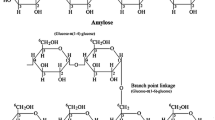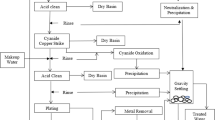Abstract
The tanning industry causes great damage and pollution to the environment. It generates tanning effluents and solid waste which, without pretreatment, discharged directly into the environment. Beam-house operations are among the important process of this industry which generates the biggest amount of toxic effluents. These wastes are considered as the most odious materials in the leather industry. The effluent is characterized by alkaline pH value, high loads of oil&grease, sulfides, total suspended solids, chemical oxygen demands and biological oxygen demands. Integration of chemical coagulation using ferric chloride aided with lime and down flow hanging non-woven (DHNW) reactor was applied in the present study. Coagulation was performed using a continuous coagulation reactor (CCT). The DHNW was packed with non-woven poly ethylene terephthalate (PET) fabric produced from waste plastic bottles. The efficiency of the integrated treatment system was assessed using the reduction of sulfide, chemical and biological oxygen demands (COD & BOD), total Kjeldahl nitrogen (TKN) and total suspended solids (TSS). Residual concentrations of COD, BOD and TSS in the CCT effluent were 985, 440 and 25 mg/L (96.1%, 85.2% and 99.3% removal), respectively. The effluent of CCT reactor was feed to the DHNW reactor. Concentrations of COD, BOD and TSS were 145, 55 and 4 mg/L, respectively in the final treated effluent. While, the sulfide concentration had been greatly reduced to 0.5 mg/L. With respect to the parameters studied, the treated effluent might meet the National regulatory standards for discharging into the sewerage systems.
Graphical Abstract





Similar content being viewed by others
References
Ahmed, E., Abdulla, H.M., Mohamed, A.H., El-Bassuony, A.D.: Remediation and recycling of chromium from tannery wastewater using combined chemical–biological treatment system. Process Saf. Environ. Prot. 104, 1–10 (2016)
Alemu, T., Mekonnen, A., Leta, S.: Integrated tannery wastewater treatment for effluent reuse for irrigation: Encouraging water efficiency and sustainable development in developing countries. J. Water Process Eng. 30, 100514 (2019)
Almeida, J. C., Cardoso, C. E., Tavares, D. S., Freitas, R., Trindade, T., Vale, C., & Pereira, E. Chromium removal from contaminated waters using nanomaterials–a review. TrAC Trends Anal. Chem. 118, 277–291 (2019)
Anzani, C., Prandi, B., Buhler, S., Tedeschi, T., Baldinelli, C., Sorlini, G., et al.: Towards environmentally friendly skin unhairing process: A comparison between enzymatic and oxidative methods and analysis of the protein fraction of the related wastewaters. J. Clean. Prod. 164, 1446–1454 (2017)
Bacardit, A., van der Burgh, S., Armengol, J., Ollé, L.: Evaluation of a new environment friendly tanning process. J. Clean. Prod. 65, 568–573 (2014)
Bundy, C.A., Wu, D., Jong, M.-C., Edwards, S.R., Ahammad, Z.S., Graham, D.W.: Enhanced denitrification in Downflow Hanging Sponge reactors for decentralised domestic wastewater treatment. Biores. Technol. 226, 1–8 (2017)
Çalımlı, M.H., Demirbaş, Ö., Aygün, A., Alma, M.H., Nas, M.S., Şen, F.: Immobilization kinetics and mechanism of bovine serum albumin on diatomite clay from aqueous solutions. Appl. Water Sci. 8(7), 209 (2018)
Chowdhury, M., Mostafa, M.G., Kumar, B.T., Kumar, S.A.: Treatment of leather industrial effluents by filtration and coagulation processes. Water Resour. Ind. 3, 11–22 (2013)
Costa, R.C., Moura, F.C., Oliveira, P.E., Magalhes, F., Ardisson, J.D., Lago, R.M.: Controlled reduction of red mud waste to produce active systems for environmental applications: heterogeneous Fenton reaction and reduction of Cr (VI). Chemosphere 78(9), 1116–1120 (2010)
de Aquim, P.M., Hansen, É., Gutterres, M.: Water reuse: An alternative to minimize the environmental impact on the leather industry. J. Environ. Manag. 230, 456–463 (2019)
Deveci, E.Ü., Akarsu, C., Gönen, Ç., Özay, Y.: Enhancing treatability of tannery wastewater by integrated process of electrocoagulation and fungal via using RSM in an economic perspective. Process Biochem. 84, 124–133 (2019)
Dixit, S., Yadav, A., Dwivedi, P.D., Das, M.: Toxic hazards of leather industry and technologies to combat threat: a review. J. Clean. Prod. 87, 39–49 (2015)
EEAA. (2013). (Egyptian Environmental Affairs Agency) Law 48, No. 61–63 updating No. (44), 2009. Cairo, Egypt. Permissible values for wastes in River Nile, Law of the Environmental Protection.
El-Khateeb, M., Nashy, E.-S.H., Ghany, N.A., Awad, A.M.: Environmental impact elimination of chrome tanning effluent using electrocoagulation process assisted by chemical oxidation. Desalin. Water Treat. 65, 147–152 (2017)
El-Khateeb, M., Saad, M., Abdel-Shafy, H., Samhan, F., Shaaban, M.: The feasibility of using non-woven fabric as packing material for wastewater treatment. Desalin. Water Treat. 111, 94–100 (2018)
El-Khateeb, M.A., Emam, W.M., Darweesh, W.A., El-Sayed, E.S.A.: Integration of UASB and down flow hanging non-woven fabric (DHNW) reactors for the treatment of sewage water. Desalin. and Water Treat. 164, 48–55 (2019)
Gogate, P.R., Pandit, A.B.: A review of imperative technologies for wastewater treatment I: oxidation technologies at ambient conditions. Adv. Environ. Res. 8(3–4), 501–551 (2004)
Hu, J., Xiao, Z., Zhou, R., Deng, W., Wang, M., Ma, S.: Ecological utilization of leather tannery waste with circular economy model. J. Clean. Prod. 19(2–3), 221–228 (2011)
Kanagaraj, J., Panda, R., Senthilvelan, T.: Green remediation of sulfide in oxidative dehairing of skin and correlation by mathematical model: an eco-friendly approach. Process Saf. Environ. Prot. 100, 36–48 (2016)
Kanth, S.V., Venba, R., Madhan, B., Chandrababu, N., Sadulla, S.: Cleaner tanning practices for tannery pollution abatement: role of enzymes in eco-friendly vegetable tanning. J. Clean. Prod. 17(5), 507–515 (2009)
Kurniawan, T.A., Chan, G.Y., Lo, W.-H., Babel, S.: Physico–chemical treatment techniques for wastewater laden with heavy metals. Chem. Eng. J. 118(1–2), 83–98 (2006)
Lofrano, G., Meriç, S., Zengin, G.E., Orhon, D.: Chemical and biological treatment technologies for leather tannery chemicals and wastewaters: a review. Sci. Total Environ. 461, 265–281 (2013)
Mao, X., He, C.: Export upgrading and environmental performance: evidence from China. Geoforum 86, 150–159 (2017)
Marcelino, R.B.P., Andrade, L.N., Starling, M.C.V.M., Amorim, C.C., Barbosa, M.L.T., Lopes, R.P., Reis, B.G., Leão, M.M.D.: Evaluation of aerobic and anaerobic biodegradability and toxicity assessment of real pharmaceutical wastewater from industrial production of antibiotics. Braz. J. Chem. Eng. 33(03), 445–452 (2016)
Mella, B., Glanert, A.C., Gutterres, M.: Removal of chromium from tanning wastewater and its reuse. Process Saf. Environ. Prot. 95, 195–201 (2015)
Mengistie, E., Smets, I., Van Gerven, T.: Ultrasound assisted chrome tanning: towards a clean leather production technology. Ultrason. Sonochem. 32, 204–212 (2016)
Morera, J.M., Bacardit, A., Ollé, L., Bartolي, E., Borràs, M.D.: Minimization of the environmental impact of chrome tanning: a new process with high chrome exhaustion. Chemosphere 69(11), 1728–1733 (2007)
Pantazopoulou, E., Zouboulis, A.: Chemical toxicity and ecotoxicity evaluation of tannery sludge stabilized with ladle furnace slag. J. Environ. Manage. 216, 257–262 (2018)
Qiang, T., Chen, L., Zhang, Q., Liu, X.: A sustainable and cleaner speedy tanning system based on condensed tannins catalyzed by laccase. J. Clean. Prod. 197, 1117–1123 (2018)
Rice, E.W., Baird, R.B., Eaton, A.D., Clesceri, L.S.: Standard methods for the examination of water and wastewater, vol. 10. American Public Health Association, Washington, DC (2012)
Sarwar, F., Malik, R.N., Chow, C.W., Alam, K.: Occupational exposure and consequent health impairments due to potential incidental nanoparticles in leather tanneries: An evidential appraisal of south Asian developing countries. Environ. Int. 117, 164–174 (2018)
Sauer, T.P., Casaril, L., Oberziner, A.L.B., José, H.J., Moreira, R.D.F.P.M.: Advanced oxidation processes applied to tannery wastewater containing Direct Black 38—elimination and degradation kinetics. J. Hazard. Mater. 135(1–3), 274–279 (2006)
Şen, F., Demirbaş, Ö., Çalımlı, M.H., Aygün, A., Alma, M.H., Nas, M.S.: The dye removal from aqueous solution using polymer composite films. Appl. Water Sci. 8(7), 206 (2018)
Sivagami, K., Sakthivel, K., Nambi, I.M.: Advanced oxidation processes for the treatment of tannery wastewater. J. Environ. Chem. Eng. 6(3), 3656–3663 (2018)
Stasinakis, A.: Use of selected advanced oxidation processes (AOPs) for wastewater treatment–a mini review. Glob. NEST J. 10(3), 376–385 (2008)
Uemura, S., Suzuki, S., Maruyama, Y., Harada, H.: Direct treatment of settled sewage by DHS reactors with different sizes of sponge support media. Int. J. Environ. Res. 6(1), 25–32 (2012)
Varitis, S., Kavouras, P., Pavlidou, E., Pantazopoulou, E., Vourlias, G., Chrissafis, K., et al.: Vitrification of incinerated tannery sludge in silicate matrices for chromium stabilization. Waste Manage. 59, 237–246 (2017)
Yildiz, Y., Okyay, T.O., Sen, B., Gezer, B., Kuzu, S., Savk, A., et al.: Highly monodisperse Pt/Rh nanoparticles confined in the graphene oxide for highly efficient and reusable sorbents for methylene blue removal from aqueous solutions. ChemistrySelect 2(2), 697–701 (2017)
Author information
Authors and Affiliations
Corresponding author
Additional information
Publisher's Note
Springer Nature remains neutral with regard to jurisdictional claims in published maps and institutional affiliations.
Rights and permissions
About this article
Cite this article
El-Khateeb, M.A., Nashy, E.H.A. & Nayl, AA.A. Combining Chemical Coagulation Process and Innovative Aerobic Reactor for the Treatment of De-Hairing Wastewater. Waste Biomass Valor 12, 2557–2564 (2021). https://doi.org/10.1007/s12649-020-01204-0
Received:
Accepted:
Published:
Issue Date:
DOI: https://doi.org/10.1007/s12649-020-01204-0




